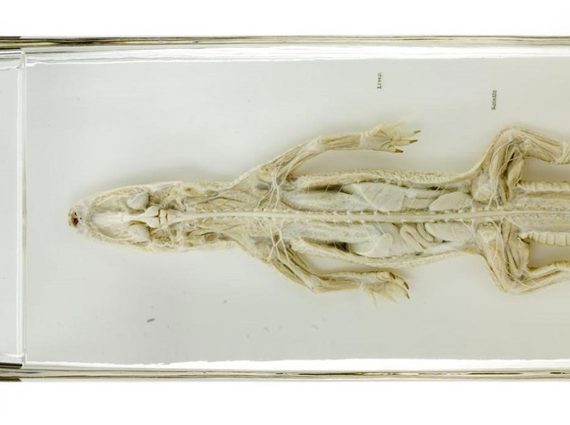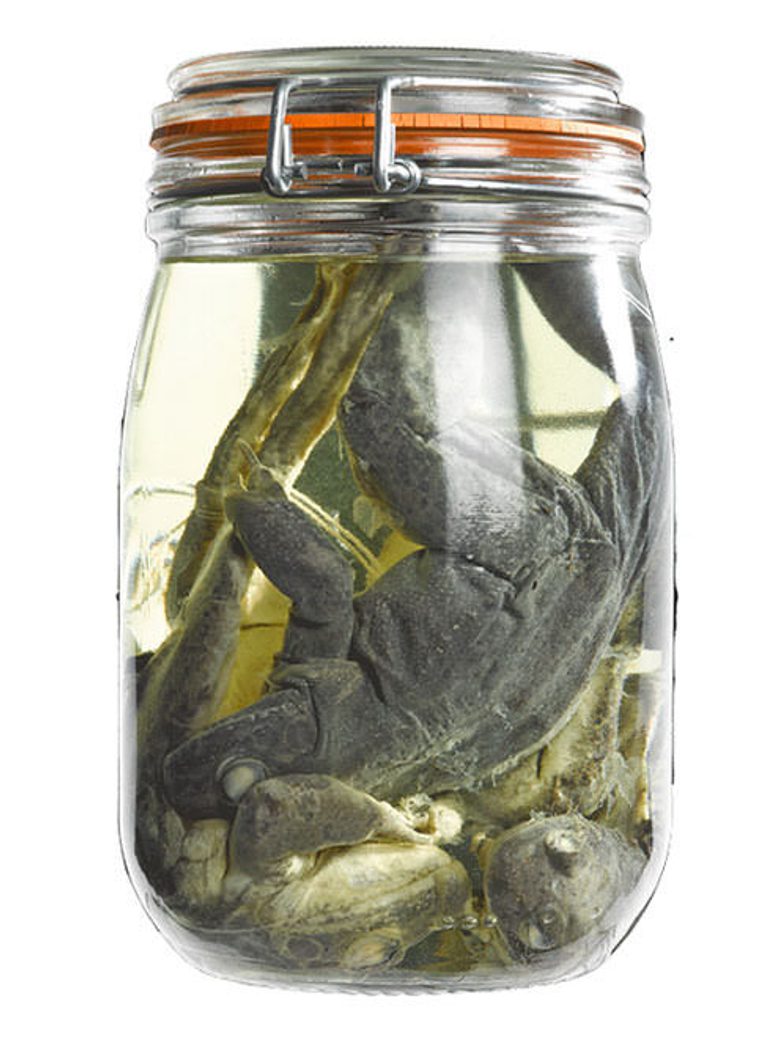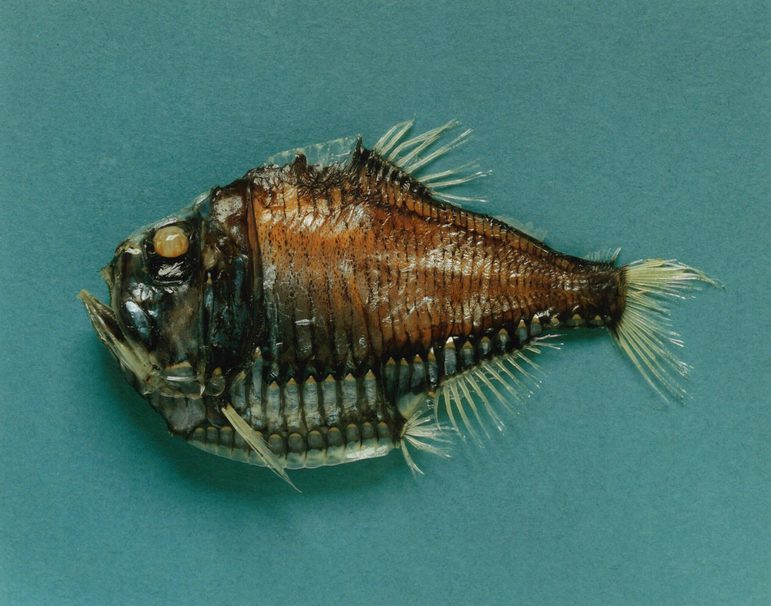
Lower vertebrates
Reptiles, amphibians and fishes are mostly kept as spirit specimens in ethanol or formalin, but there is a small collection of skeletons and mounted skins.
Reptiles and amphibians
Our collections are dominated by two large historical acquisitions.
The Sir Andrew Smith collection dates from 1859 and comprises 1,700 lots from around the world, but it is particularly strong in specimens from South Africa.
The Jeremy Anderson collection comprises about 1,200 lots of specimens collected in Baluchistan in the 1960s-70s. Other important collections include Australian specimens from Sir Malcolm Donald McEacharn in 1925 and snakes from Thomas Traill in 1869.
There have been recent important acquisitions from Europe and Mexico.

Pueblan pool frog, Lithobates pueblae
Fishes
This worldwide collection of more than 6,000 lots of specimens contains extensive collections from the Scottish National Antarctic Expedition acquired in 1921, the Free Church College in 1966 and the Parnell collection in 1834-1888. More recent acquisitions include the DAFS Marine Laboratory acquired in 1982 and mid-water deep sea fishes from Biscay, Madeira, west of Shetland and off Rockall.

Giant hatchetfish, Argyropelecus gigas.